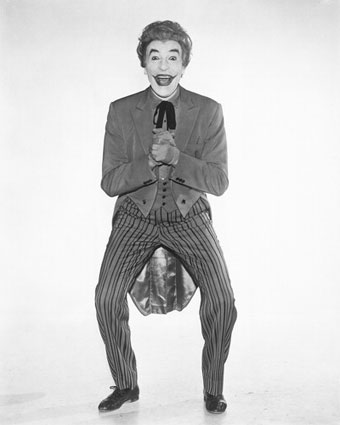Romero was born in New York to prosperous Cuban parents. That lifestyle, however, changed dramatically when his parents lost their sugar import business and suffered losses in the Stock Market Crash of 1929. Fortunately, Romero's Hollywood earnings allowed him to support his large family, all of whom followed him to the West Coast, years later. Romero lived on and off with various family members, especially his sister, for the rest of his life.
In October 1942, he voluntarily enlisted in the U.S. Coast Guard and served in the Pacific Theatre. He reported aboard the Coast Guard-manned assault transport USS Cavalier (APA-37) in November, 1943 and saw action at Tinian and Saipan. He preferred to be a regular part of the crew and was eventually promoted to the rank of chief Boatswain's Mate.
Romero played "Latin lovers" in films from the 1930s until the 1950s, usually in supporting roles. Initially, he attracted attention in Hollywood when he starred as The Cisco Kid in six westerns made between 1939 and 1941. Romero's skill at both dancing and comedy can be seen in the classic 20th Century Fox films he starred in opposite Carmen Miranda and Betty Grable, such as Week-End in Havana and Springtime in the Rockies, in the 1940s.
Among his many television credits, Romero played the role of Don Diego de la Vega's uncle in a number of Season Two Zorro episodes. In 1958, he guest starred as Ramon Valdez, a South American businessman, who excels at doing the Cha-Cha with Barbara Eden in her syndicated romantic comedy, How to Marry a Millionaire in the episode "The Big Order". He performed the mamba with Gisele MacKenzie on her NBC variety show, The Gisele MacKenzie Show. In 1965, Romero played the head of THRUSH in France in The Man from U.N.C.L.E. ("The Never Never Affair").
In the 1970s, Romero portrayed the absent father of the Freddie Prinze character Chico Rodriguez in Chico and the Man, and later Peter Stavros in the television series Falcon Crest (1985-1987). Among Romero's guest star work in the 1970s was a recurring role on the western comedy Alias Smith and Jones, starring Pete Duel and Ben Murphy. Romero played Señor Armendariz, a Mexican rancher feuding with Patrick McCreedy (Burl Ives), the owner of a ranch on the opposite side of the border. He appeared in three episodes. He also appeared as Count Dracula on Rod Serling's Night Gallery.
Apart from these television roles, Romero's most notable work in film in this period is as A.J. Arno, a small time criminal who continually opposes Dexter Riley (played by Kurt Russell) and his schoolmates of Medfield College in a series of films by Walt Disney Productions in the 1970s.
In The Simpsons episode "Hungry, Hungry Homer", the ghost of Cesar Chavez appears as Cesar Romero because Homer Simpson doesn't know what Cesar Chavez looks like.
In 2008, comedian Shaun Micallef started doing impersonations of Cesar on his television show Newstopia. The impersonations featured Cesar doing fake news reports from various locations.
Romero believed in liberation theology. Romero was a dedicated Christian, and believed in a utopian society whose belief is that Christ's kingdom would be very similar to Marx's envisionment of communism, and held to this belief until his death.
Romero always claimed his grandfather on his mother's side was Cuban poet and patriot José Martí. There was some speculation that Maria was fathered by Martí who was a boarder in the Mantilla household, but he never claimed Maria as his daughter in his lifetime.
Romero never married, despite proposing to at least one woman. Romero made regular appearances on the Hollywood social circuit, usually in the company of an attractive actress, and he was almost always described in interviews and articles as a "confirmed bachelor." Romero discussed his homosexuality in a series of interviews with author Boze Hadleigh, with the understanding that they would not be published during his lifetime.
Romero wore a man's tennis bracelet inscribed with his favorite nickname: "Butch." The term was reportedly bestowed on Romero by his one-time dancing partner Joan Crawford, who teased Romero by telling him: "You're so butch!" While Romero's homosexuality was an "open secret" in Hollywood, the movie-going public was unaware of his sexual orientation and there was never any embarrassing scandal surrounding his male liaisons, partially because he strove to be as discreet as possible.
Romero was a mainstay of the Hollywood social circuit until his peaceful death in 1994. He was cremated and his ashes interred at Inglewood Park Cemetery in South Los Angeles community of Inglewood, California.











I was about 11 years old when the original version of Ocean's 11 was in theaters. Cesar Romero played Duke Santos, who was responsible for seeing that the gang with Frank Sinatra and Dean Martin et al was getting caught after robbing the casinos. My mom took me to see it because my dad only saw movies with a western theme, preferably with John Wayne. I saw it most recently after the George Clooney version came out 2001 and wanted to compare them. There isn't much similarity but it's still fun to see.
ReplyDelete